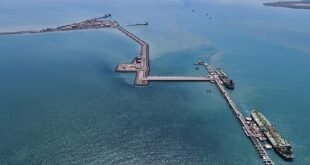29-08-2022
Bureau Report
NEW DELHI: As India’s capital of New Delhi prepares for winter and the accompanying season of acrid smog, the government is promoting a motorcycle helmet fitted with filters and a fan at the back that it claims can remove 80% of pollutants.
 State agencies have pumped thousands of dollars into Shellios Technolabs, a startup whose founder Amit Pathak began work on the helmet, which he calls the world’s first of its kind, in a basement in 2016.
State agencies have pumped thousands of dollars into Shellios Technolabs, a startup whose founder Amit Pathak began work on the helmet, which he calls the world’s first of its kind, in a basement in 2016.
That was the year of the first headlines about the filthy air that makes New Delhi nearly unbreathable from mid-December to February, as the heavy cold traps dust, vehicle emissions, and smoke from burning crop waste in nearby states.
“Inside a home or office, you could have an air purifier,” said Pathak, an electrical engineer” but the guys on the bike, they have no protection at all.”
So his company designed a helmet with an air purification unit, fitted with a replaceable filter membrane and a fan powered by a battery that runs six hours and can be charged through a microUSB slot.
Sales of the helmet began in 2019, and tests on New Delhi’s streets by an independent laboratory confirmed it can keep more than 80% of pollutants out of users’ nostrils, Pathak added.
 A 2019 test report seen by Reuters News Agency shows the helmet cut levels of lung-damaging PM 2.5 airborne particles to 8.1 micrograms per cubic metre from 43.1 micrograms outside.
A 2019 test report seen by Reuters News Agency shows the helmet cut levels of lung-damaging PM 2.5 airborne particles to 8.1 micrograms per cubic metre from 43.1 micrograms outside.
According to India’s science and technology ministry, the helmet is “a breath of fresh air for bikers.” That could not come at a better time in a country that had 35 of the world’s 50 worst polluted cities last year.
Pathak sees a big opportunity amid annual demand for 30 million helmets but declined to reveal his production or sales figures.
Each helmet retails at 4,500 rupees ($56), or nearly four times the cost of a regular one, effectively putting the device beyond the reach of many riders in India.
Since the weight of 1.5 kg (3.3 lb) is heavier than existing devices, Shellios has tied up with a big manufacturer to develop a lighter version from a thermoplastic material rather than fiberglass, a step that will also cut the cost.
The new version is expected to come out within a few months.
Pathak said the company had also drawn interest from Southeast Asian nations such as Malaysia, Thailand, and Vietnam.
 Pressmediaofindia
Pressmediaofindia




